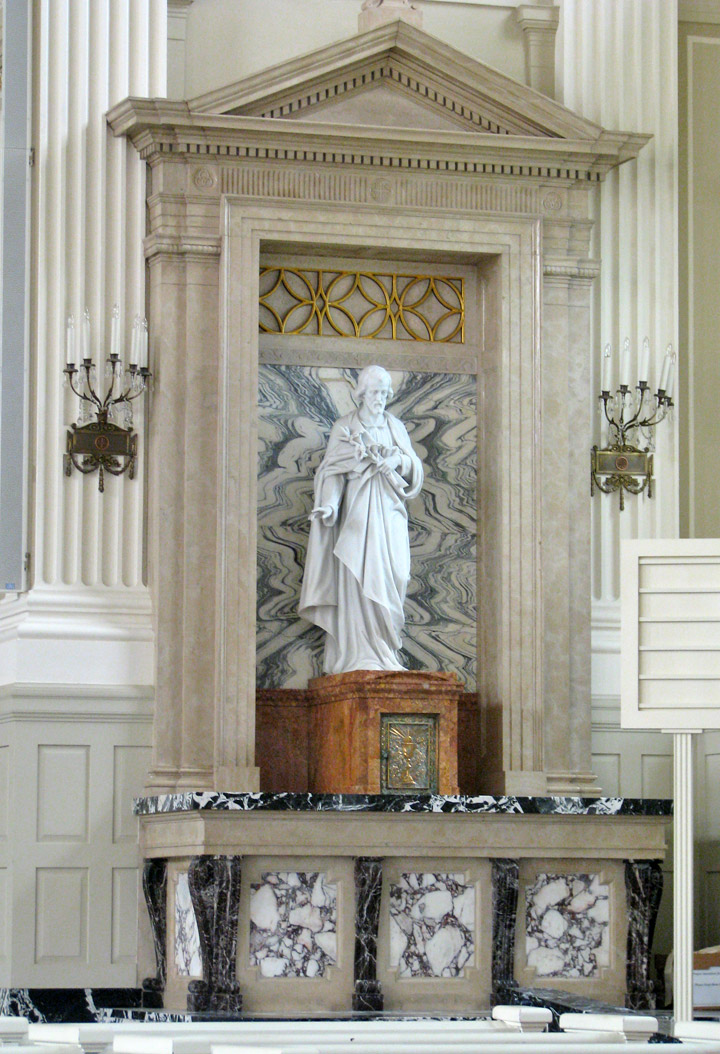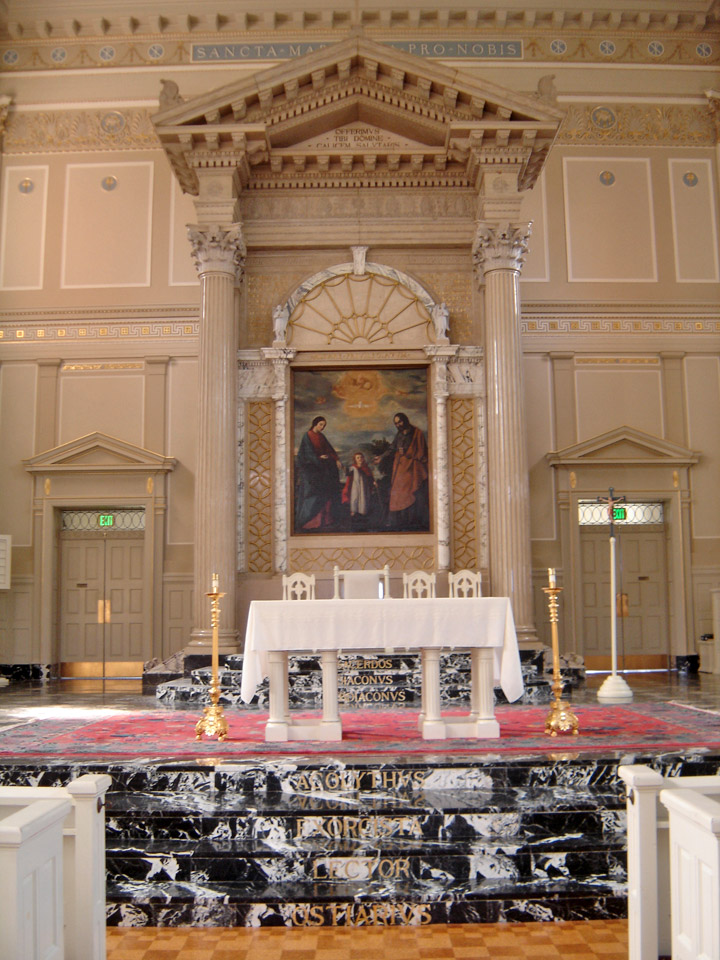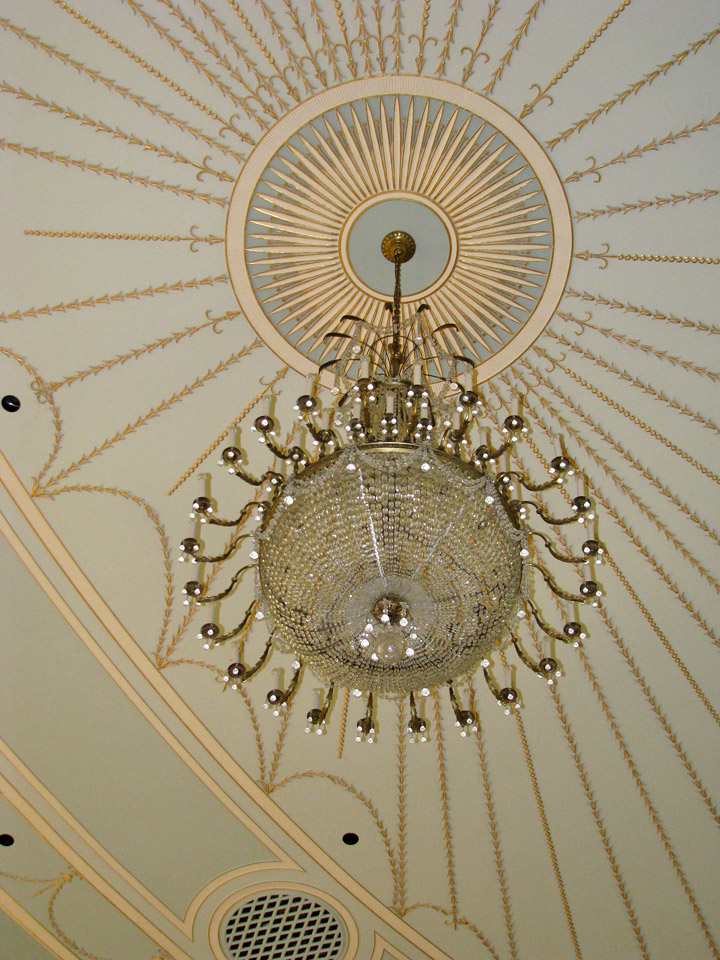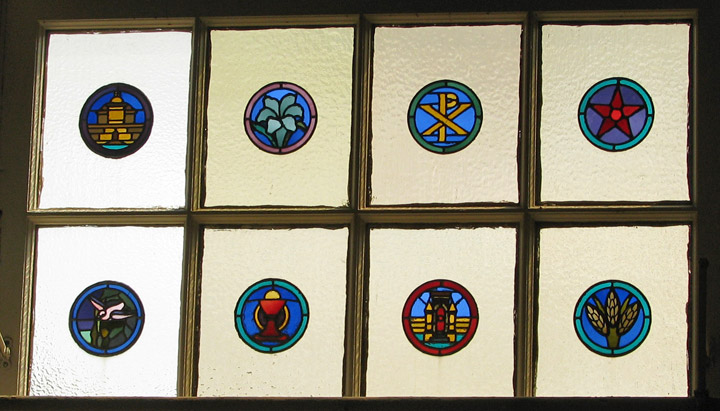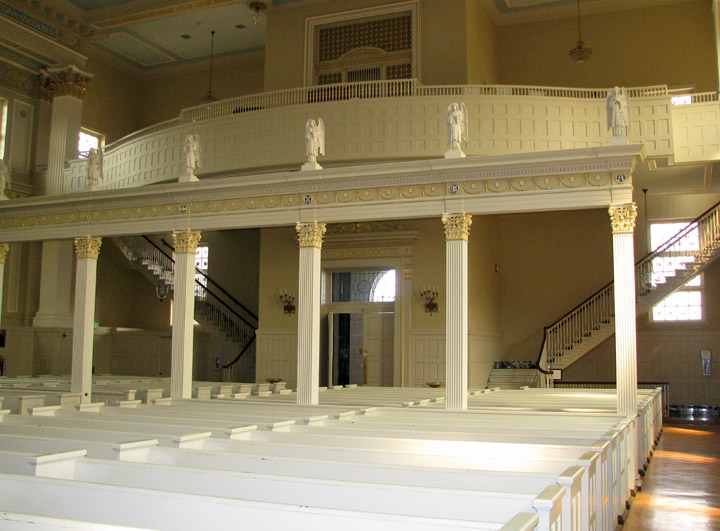

St Mary of the Lake
Mundelein Seminary
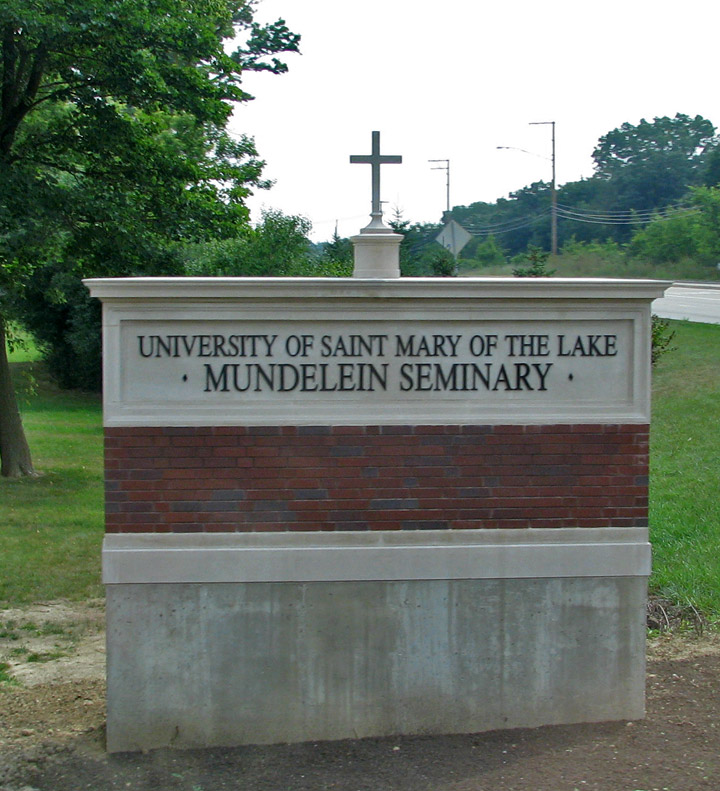
University of Saint Mary of the Lake, also called Mundelein Seminary, is the principal seminary and school of theology for the formation of priests in the Roman Catholic Archdiocese of Chicago, governed from Chicago, Illinois in the United States. It is recognized as the first institution of higher education in the City of Chicago. Chartered by the Illinois General Assembly in 1844, it has the longest continuous academic charter in the state of Illinois.

The campus has capacity for about 400 students. It is distinctive for its
neo-Georgian architecture, laid out in a symmetrical manner surrounding the main
chapel, dedicated to Saint Mary of the Lake — the patroness of the seminary. The
chapel' distinctive interior is itself unusual, embodying certain
characteristics of Wedgwood blue color and design, as well as the cool ivories
in the marble and wood decoration used in the sanctuary and rood screen. If
anything, the chapel brings to mind certain classic architecturally-distinctive
structures such as King's Chapel in Boston.
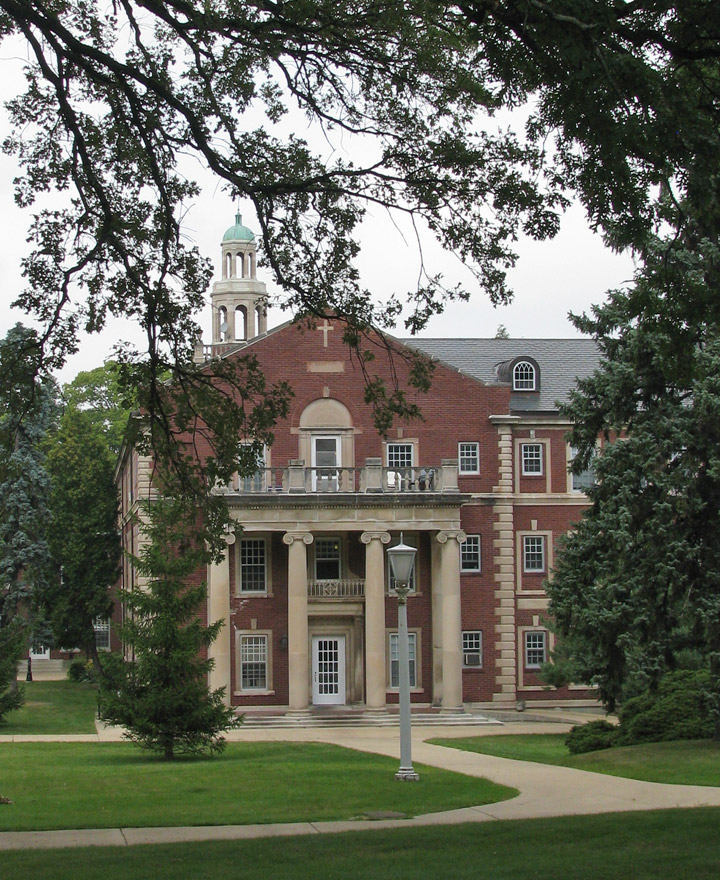
It is located north of Route 176 and east of Rt. 45, occupies 600+ acres (2.4
km²), has several lakes, and has a retreat center which is quite active. The
library of the seminary is notable for its interior in which can be found a
ceiling copied from the Palazzo Barberini in Rome — complete with the coats of
arms of the Barberini family, including its distinctive bees, a classic symbol
of industriousness and success.
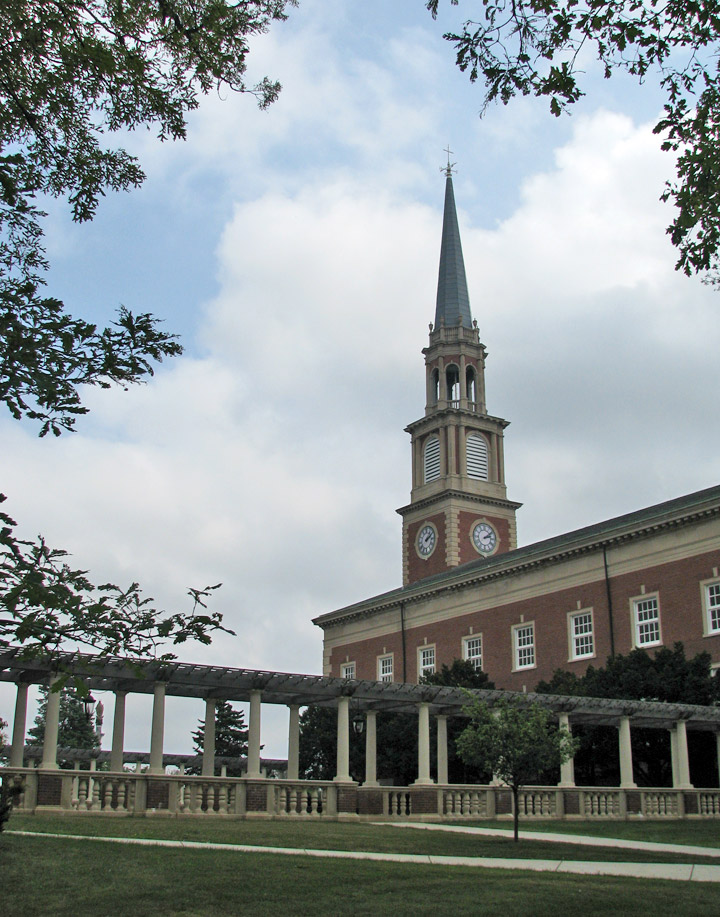
Right Reverend William J. Quarter, the first bishop of Chicago, oversaw the
creation and early development of the University of Saint Mary of the Lake with
the primary objective of ordaining priests to serve the growing diocese. After
years in flourishing operation but growing financial burden, the university was
forced to close in 1866.

the library
Expressing a need for more priests, Archbishop George Mundelein was compelled to re-open the institution as Saint Mary of the Lake Seminary around 1921. The institution became known throughout the world in 1926 as a site for the International Eucharistic Congress.
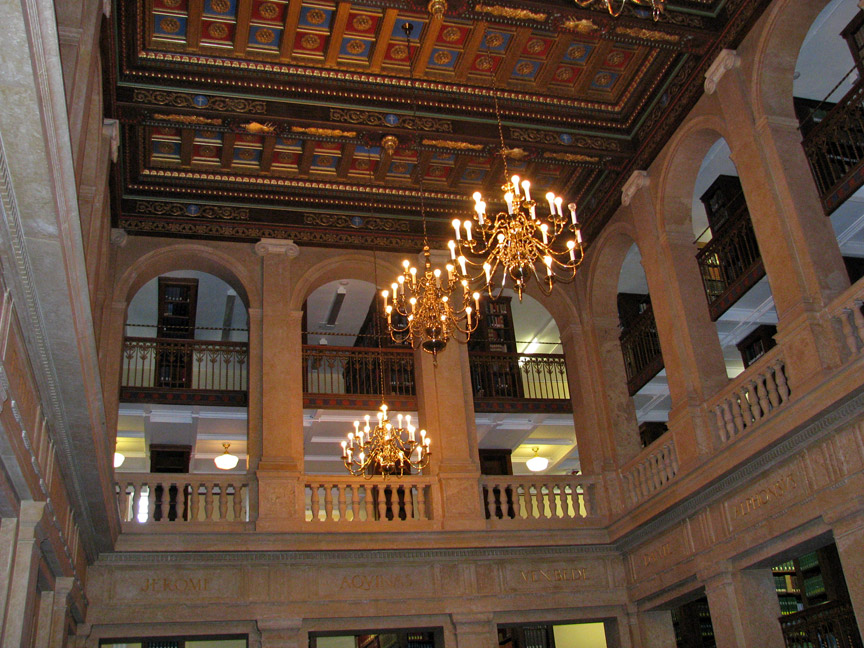
Library Interior
In September of 1929, the seminary received a second charter, this time from the
Holy See. Cardinal Mundelein obtained from the Sacred Congregation for
Seminaries and Universities the authority to grant the international academic
degrees of the Holy See. In 1934 the Ecclesiastical Faculty of Theology at
Mundelein was honored with a permanent grant of this authority. The seminary
became the first American institution to be honored as a pontifical theological
faculty under the Apostolic Constitution Deus Scientarium Dominus.

Under the leadership of Albert Cardinal Meyer, in 1961 the seminary opened a second campus in Niles, Illinois. The Niles campus became the site for the two-year liberal arts program. The Mundelein campus included the upper class college studies in philosophy followed by a four year theology curriculum. Under Cardinal Meyer’s successor, John Cardinal Cody, the undergraduate program was affiliated with Loyola University of Chicago and became Niles College of Loyola University. Saint Mary of the Lake Seminary was now strictly a graduate school of theology. The program which resulted from that revision continued to be implemented for more than a decade, its academic, formation/spiritual and pastoral aspects guided by the Program of Priestly Formation of the National Conference of Catholic Bishops and the directives of the Sacred Congregation of Education.
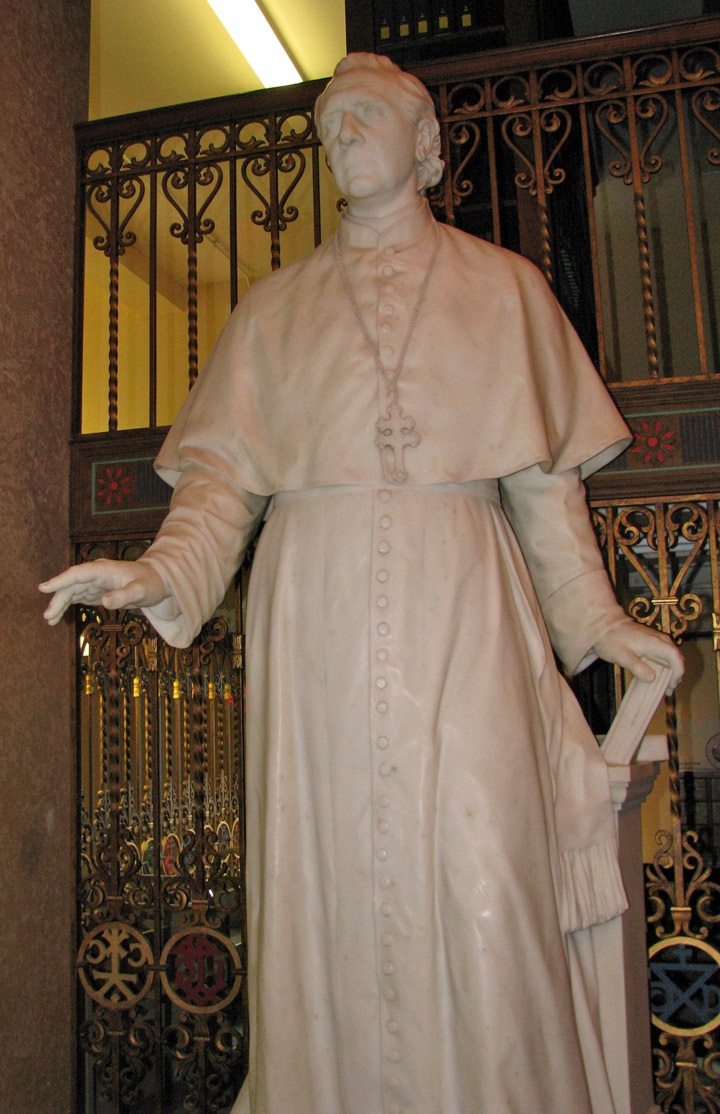
In 1971, Saint Mary of the Lake Seminary became affiliated with the Association
of Theological Schools of the United States and Canada, which is the accrediting
body for theological seminaries and divinity schools.
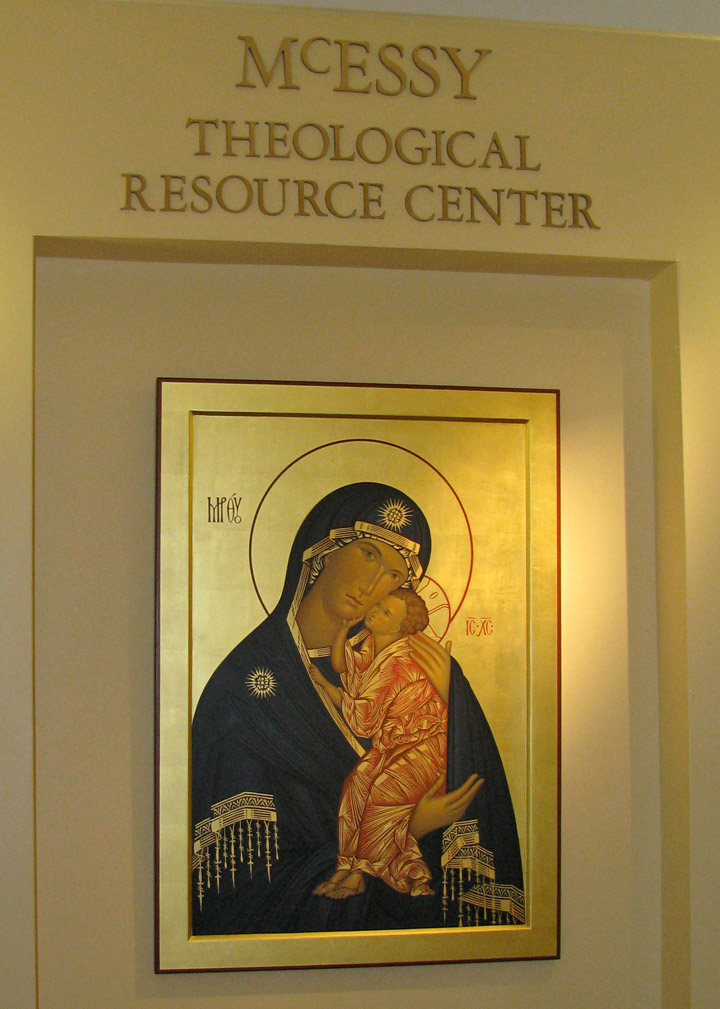
1976 saw two milestones in the seminary history. In cooperation with the Center
for Pastoral Ministry, the Archdiocese of Chicago’s continuing education school,
the seminary began a program of studies leading to the new doctor of ministry
degree. Also in 1976, the seminary celebrated the 50th anniversary of the first
ordinations held in the Chapel of the Immaculate Conception.

new addition to the library
In Fall of 1982, under the direction of Archbishop Joseph Bernardin, the seminary faculty initiated a thorough revision of the program which had been in place for ten years. The changes had as their goal the better implementation of the objectives set forth in the third edition of the Program of Priestly Formation.
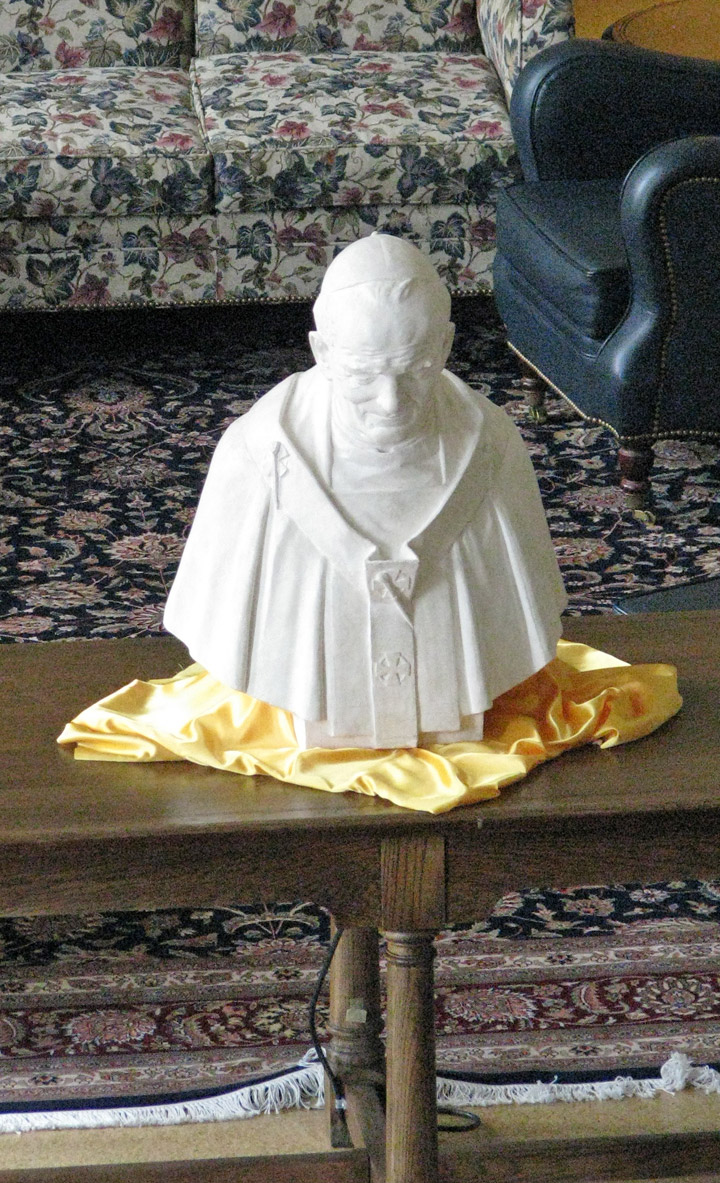
Pope John Paul
In 1986, Cardinal Bernardin announced that the University of St. Mary of the Lake would be revived with the addition of a continuing education school, the Center for Development in Ministry, to the campus. The new center would continue the work of continuing education for priests which was the mission of the Center for Pastoral Ministry, but would now expand to offer continuing education to all those in ministry, clergy, religious and laity. Saint Mary of the Lake Seminary again adopted the name on its original 1844 charter, the University of St. Mary of the Lake, and honored its second founder by renaming the graduate school as Mundelein Seminary.
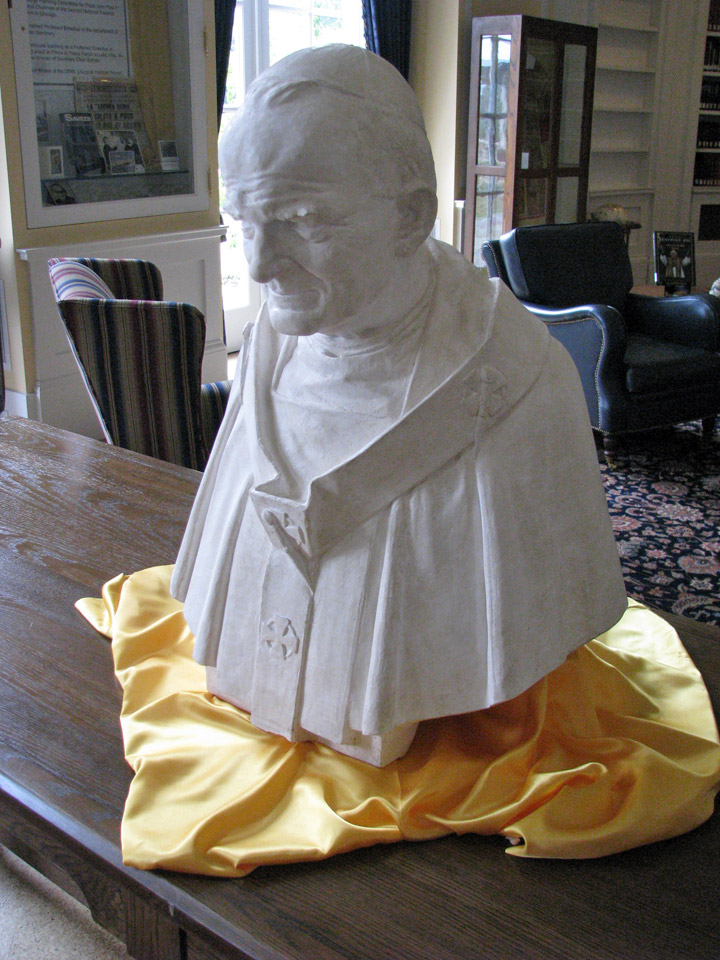
During the spring of 1996, Mundelein Seminary was visited by members of the
Bishops’ Committee on Seminaries. After an extensive series of meetings with
faculty and students, the members of the committee gave a strong recommendation
to the seminary program.
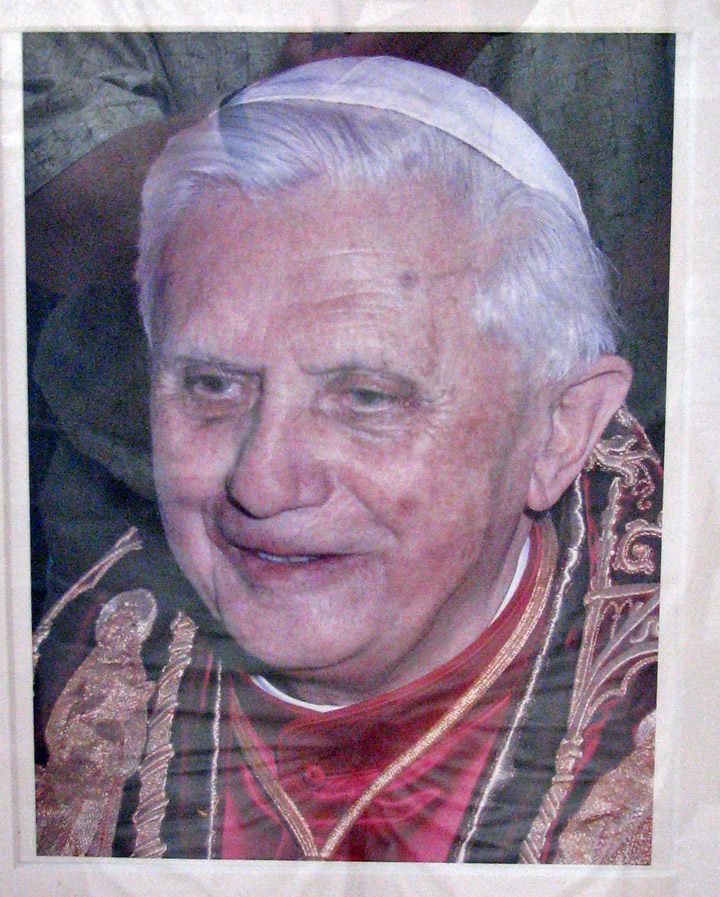
Pope Benedict XVI
Francis Cardinal George continued this development of the university in February 2000 by transferring the Archdiocese of Chicago’s programs of ministry formation to the seminary. Three former agencies of the Pastoral Center were transferred here to become programs of Mundelein Seminary. Joining USML that year were the Lay Ministry Formation Program, the Diaconate Formation Program and the Instituto de Liderazgo Pastoral. While remaining separate and distinct from the priestly formation program, all are to cooperate under the seminary aegis in advancing the efforts of ministry preparation and formation for all those involved in pastoral ministry. Plans were also begun to separate the continuing education programs of the Center for Development in Ministry from the university and to relocate them as an agency of the Pastoral Center. These same plans included the continued operation of a Conference Center at the University of Saint Mary of the Lake. This would make Mundelein Seminary the center for all basic formation for ministry, while leaving continuing formation to other agencies. To reflect this evolution, the Board of Advisors decided to adopt a compound name, the University of St. Mary of the Lake / Mundelein Seminary. This follows the style of most of the pontifical universities which have a formal name and a common name which become interchangeable.
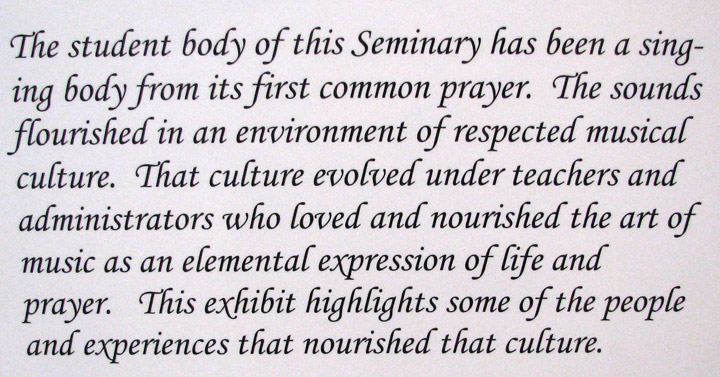
Also in 2000, Cardinal George established the Liturgical Institute at the
University of St. Mary of the Lake / Mundelein Seminary. This is the first step
in a new vision of the cardinal to expand the university to include specialized
institutes to support the major ministries of the archdiocese. The Liturgical
Institute has its own faculty and is dedicated to training, research and
publication in the fields of sacramental theology and liturgy. The Institute
offers a professional master of arts in liturgy, an academic master of arts
(liturgical studies), and a licentiate in sacred theology. All degrees are
awarded by the University of St. Mary of the Lake / Mundelein Seminary.
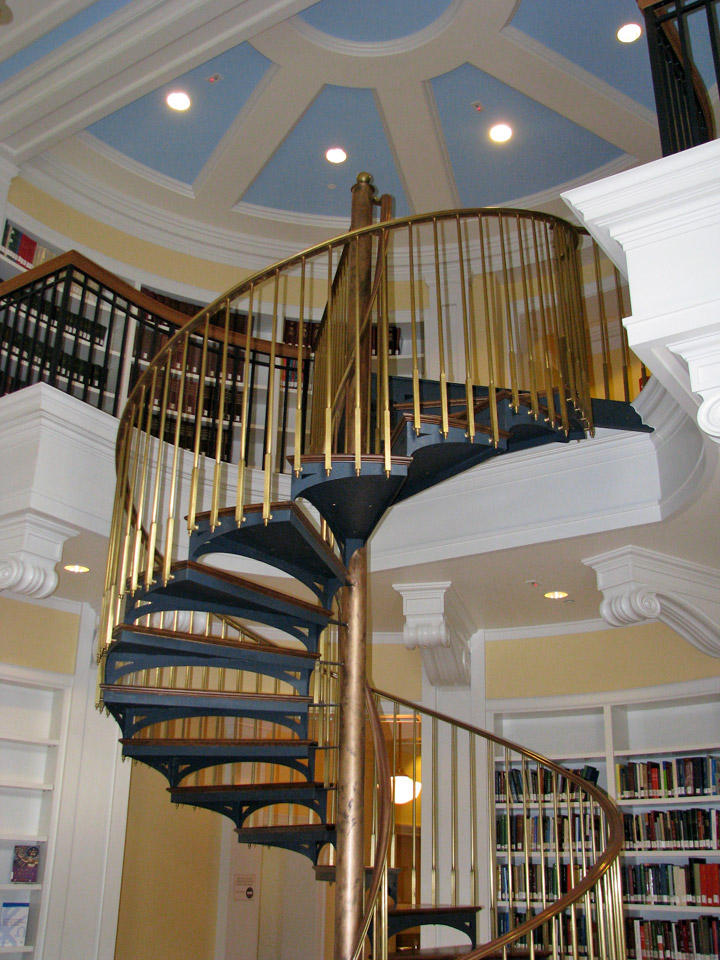
library stairway
In September 2005, two seminarians perished in a drunk-driving accident on the seminary grounds. Four seminarians, Matthew Molnar, Jared Cheek, Robert Spaulding and Mark Rowlands had spent the evening drinking at a Mundelein bar before returning to campus. Rowlands had driven Spaulding to the bar, while Molnar and Cheek had arrived in Molnar's car. Spaulding drove the four back to campus in Rowland's car, since Molnar had lent his car to two seminarians who returned to the campus a short time earlier. On the grounds, Spaulding hit a tree, killing Molnar and Cheek, who were riding in the back seat. When police arrived on the scene, they found that Rowlands had a gun and police badges on him. Later, the seminary learned that Rowlands was a sheriff's deputy in Ohio before he was reportedly terminated for misspending $300,000 in funds. The seminary and the Chicago Archdiocese suffered some embarrassment when the Lake County State's Attorney's office requested that the archdiocese provide them a list of all the priests accused of sexual abuse who now live in a separate retreat house on the seminary grounds. It had become the archdiocese's practice to remove accused priests from the ministry and send them to live there. Because most of those priests were never charged, they were not on the sex offender registry. The state's attorney suggested that the priests be moved out of the seminary because they were not under any confinement and the seminary is across the street from a high school.

on the lake
The Archdiocese responded to charges that the students of the neighboring high school, Carmel High School, were in any danger by barring the high school from using the seminary grounds for its annual walkathon fundraiser in April 2006. The fundraiser had been held at the seminary since its inception in the mid-1980s.
Text from Wikipedia
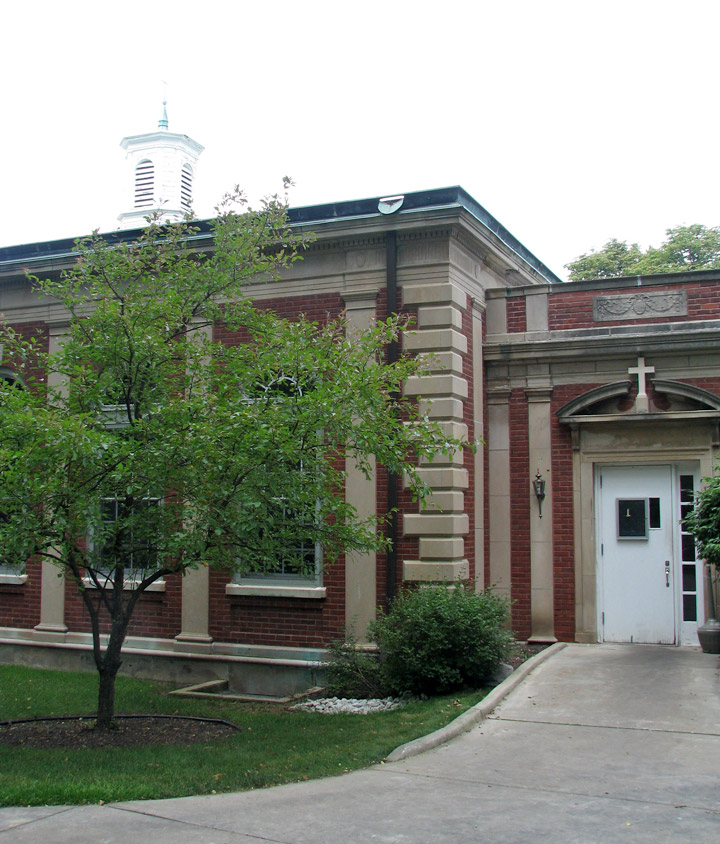
dining facility
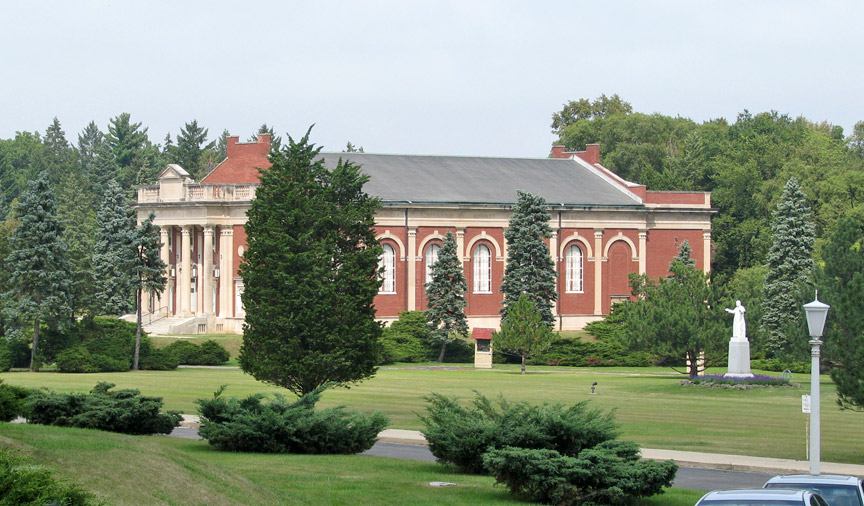

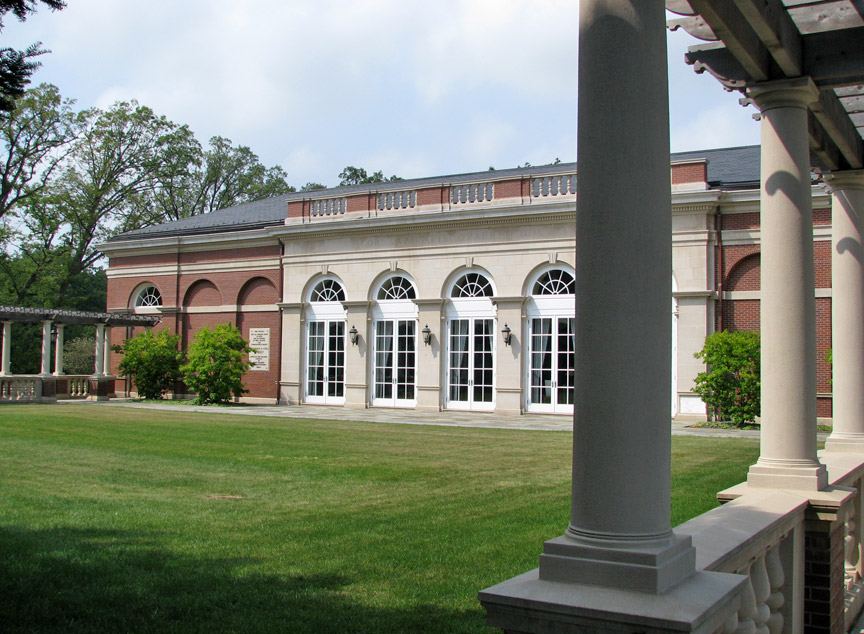
Seminary Church
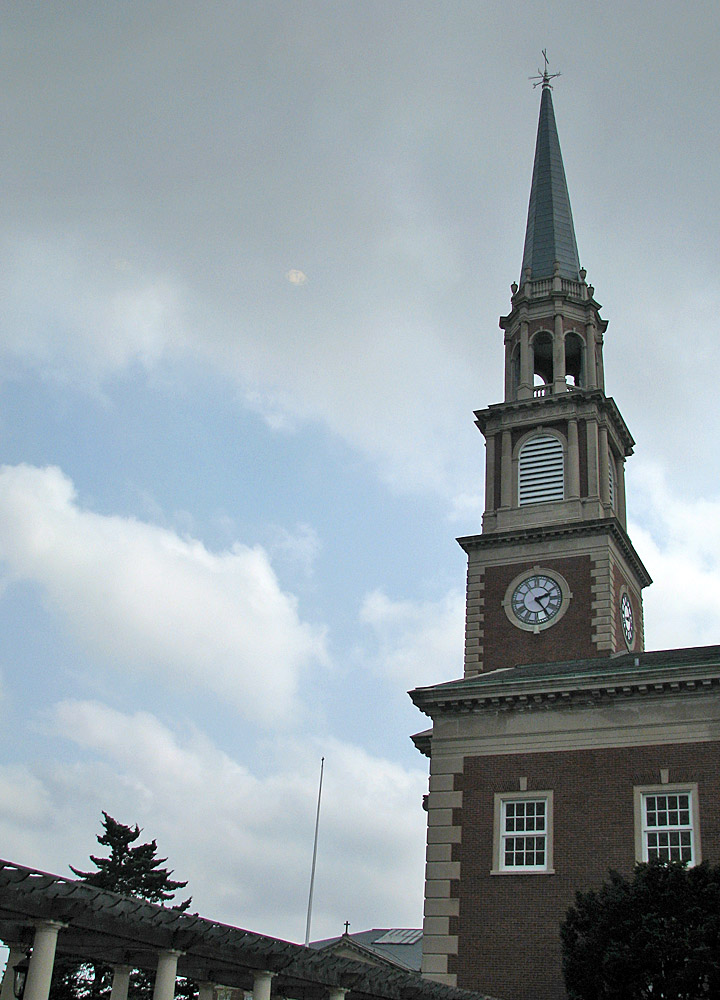
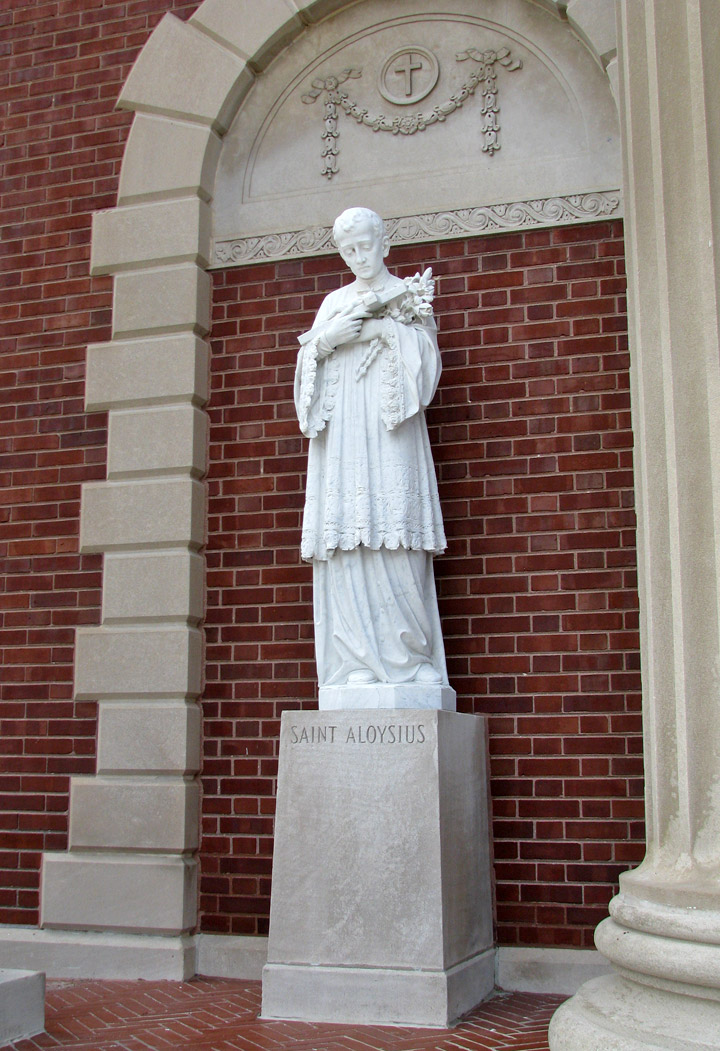
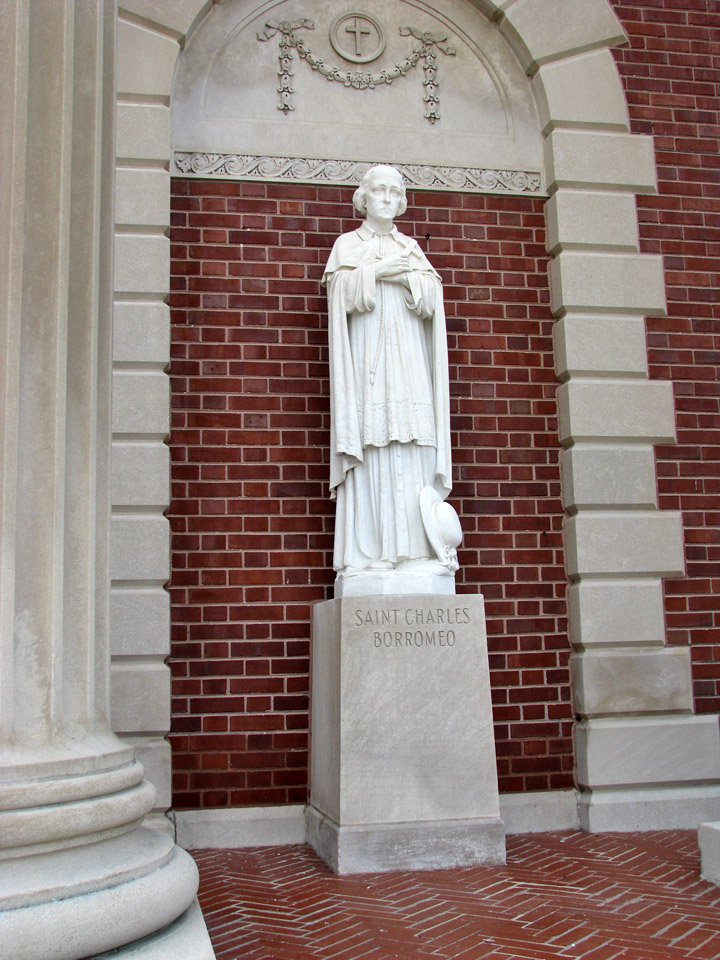
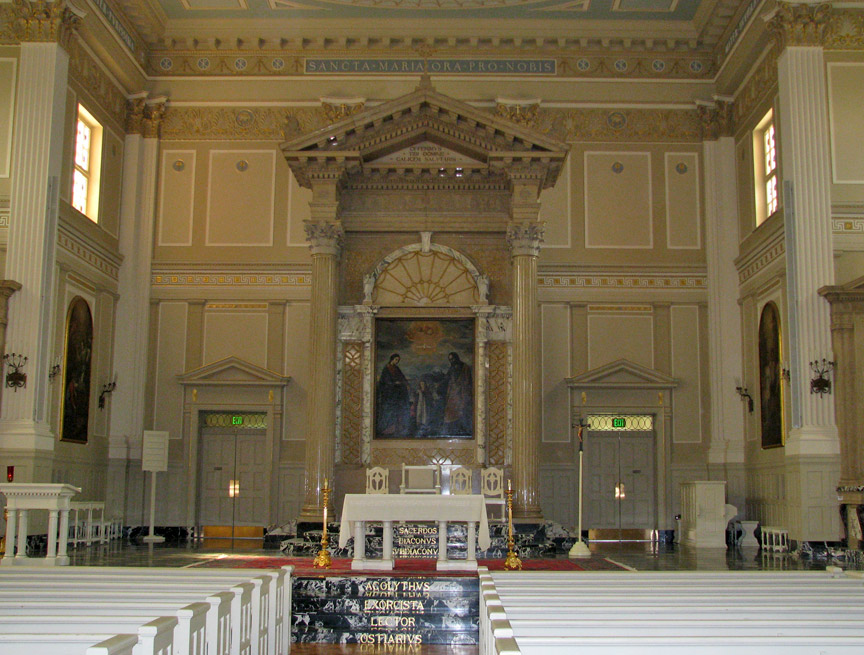
interior
